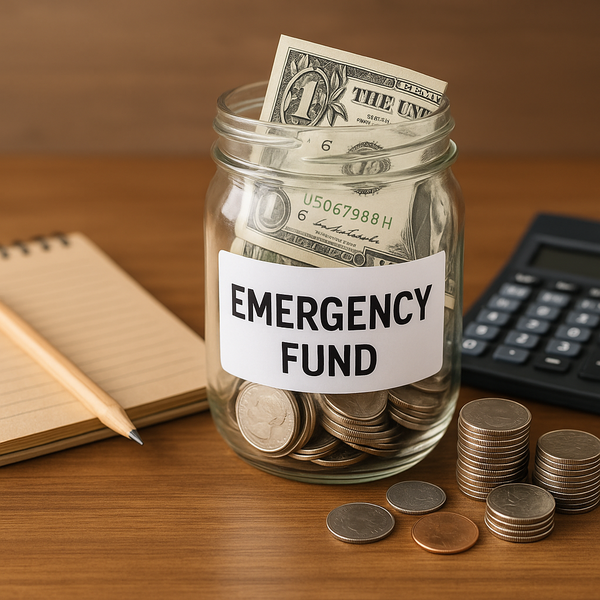
Life is full of surprises, and not all of them are pleasant. Unexpected events like job loss, medical emergencies, or major home repairs can quickly derail your financial stability. Without a safety net, these unforeseen circumstances can lead to debt, stress, and long-term financial setbacks. This is where the concept of an emergency fund becomes not just helpful, but absolutely essential for securing your financial future.
Understanding What an Emergency Fund Is
An emergency fund is a stash of money specifically set aside to cover unexpected expenses or income loss. It acts as a buffer between you and financial disaster. Think of it as your personal financial insurance policy. Unlike savings for a down payment on a house or a vacation, this money is strictly for emergencies. It provides peace of mind knowing you can handle life's curveballs without resorting to high-interest debt like credit cards or personal loans.
Why an Emergency Fund is Crucial
The primary benefit of an emergency fund is protection against the unexpected. Imagine losing your job; an emergency fund allows you to cover essential living expenses like rent or mortgage payments, utilities, groceries, and insurance premiums while you search for new employment. This prevents you from falling behind on bills and damaging your credit score. Similarly, facing a sudden medical bill or a car breakdown becomes manageable when you have funds readily available. It prevents you from having to borrow money or drain other savings dedicated to long-term goals like retirement or education.
How Much Should Be In Your Emergency Fund?
The general rule of thumb recommended by financial experts is to save enough to cover 3 to 6 months of essential living expenses. However, the exact amount can vary depending on your personal circumstances. Factors to consider include job stability, income consistency, number of dependents, and other financial obligations. If you have a less secure job, are self-employed, or have several dependents, aiming for the higher end (6 months or more) might be wiser. For dual-income households with stable jobs, 3 months might suffice as a starting point.
Calculating Your Essential Monthly Expenses
To determine your emergency fund target, you need to calculate your essential monthly expenses. This isn't your total monthly spending, but rather the minimum amount you need to survive. This typically includes:
- Housing (rent or mortgage, property taxes, insurance)
- Utilities (electricity, gas, water)
- Food (groceries)
- Transportation (car payment, insurance, gas, public transport)
- Minimum debt payments (credit cards, loans - though ideally, you wouldn't use emergency funds for regular debt)
- Insurance premiums (health, life, disability)
- Essential communication (phone, internet)
Exclude discretionary spending like entertainment, dining out, vacations, or luxury purchases. Add up these essential expenses and multiply by 3, 6, or more depending on your target coverage period.
Where to Keep Your Emergency Fund
Your emergency fund needs to be easily accessible but also separate from your everyday checking account to avoid accidentally spending it. A high-yield savings account or a money market account is typically the best option. These accounts offer liquidity (easy access to cash) while earning a small amount of interest, unlike a checking account. Avoid investing your emergency fund in stocks or other volatile assets, as you need the money to be stable and readily available when an emergency strikes, regardless of market conditions.
Building Your Emergency Fund: Steps to Take
Building an emergency fund takes time and discipline, but it's achievable. Here are some steps to get started:
1. **Set a Specific Target:** Based on your essential expenses, define exactly how much you need to save.
2. **Make it a Priority:** Treat saving for your emergency fund like any other important bill or financial goal.
3. **Create a Budget:** Understand where your money is going to identify areas where you can cut back and redirect funds towards savings.
4. **Automate Your Savings:** Set up automatic transfers from your checking account to your savings account each payday. Even small amounts add up over time.
5. **Cut Expenses:** Look for non-essential expenses you can reduce or eliminate temporarily to accelerate your savings.
6. **Increase Income:** Consider a side hustle or selling unused items to boost your savings contributions.
7. **Start Small:** If saving 3-6 months feels overwhelming, start with a smaller, more manageable goal, like $500 or $1,000. This initial buffer can cover many minor emergencies and build momentum.
Common Pitfalls to Avoid
Building and maintaining an emergency fund requires diligence. Avoid these common mistakes:
- **Not Starting:** The biggest mistake is delaying starting. Even saving a little is better than saving nothing.
- **Keeping it Too Accessible:** If it's in your checking account, you might spend it impulsively on non-emergencies.
- **Investing It:** As mentioned, the risk of losing the principal is too high for funds needed for immediate, unpredictable events.
- **Using it for Non-Emergencies:** Stick to your definition of an emergency. Using it for a vacation or new gadget defeats its purpose.
- **Not Replenishing It:** If you have to use the fund, make it a priority to rebuild it as quickly as possible.
The Psychological Benefits of an Emergency Fund
Beyond the practical financial protection, having an emergency fund significantly reduces financial stress and anxiety. Knowing you have a safety net allows you to sleep better at night and make clearer decisions during challenging times. It provides a sense of control over your finances, which is incredibly empowering. It also prevents you from making rash, desperate financial decisions, like taking out high-interest loans, when faced with an unexpected bill.
Building and Maintaining is Key
Building your emergency fund is a journey, not a destination. Once you reach your initial target, the work isn't over. Periodically review your essential expenses and adjust your fund accordingly, especially after major life changes like moving, having children, or changing jobs. Maintaining this buffer ensures you remain prepared for whatever the future may hold, providing enduring financial security and peace of mind.

